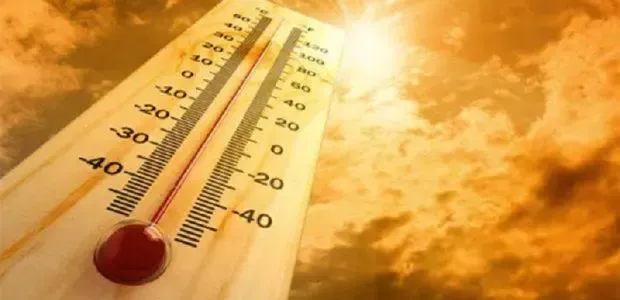Jammu, June 9, 2025 – An intense heatwave has gripped the Jammu region, with temperatures soaring above 40°C for the third consecutive day, pushing residents and infrastructure to their limits. Samba recorded the highest temperature in the region at a scorching 43.9°C, while Jammu city followed closely at 42.7°C, according to the local meteorological department. The unrelenting heat has disrupted daily life, increased power demands, and raised concerns about health and agriculture across the region.
The India Meteorological Department (IMD) has issued a heatwave alert for Jammu, Kashmir, Ladakh, and neighboring areas, with conditions expected to persist until June 11. The forecast predicts no significant relief in the coming days, with temperatures in Samba, Jammu, and Kathua likely to rise further. A slight weather disturbance, including possible windstorms and thundershowers, is expected on the evening of June 9, but it is unlikely to provide substantial respite.
Other parts of the region also sweltered under extreme heat. Kathua recorded 41.2°C, Reasi hit 38.5°C, and the holy township of Katra, base camp for pilgrims to the Mata Vaishno Devi shrine, reached 38.2°C. In contrast, cooler areas like Bhaderwah (31.8°C), Banihal (32.5°C), and Batote (32.3°C) still experienced above-normal temperatures. The heatwave has been particularly challenging for pilgrims and outdoor workers, with authorities urging precautions like staying hydrated and avoiding direct sunlight during peak hours.
Posts on X reflect the severity of the situation, with users noting Samba’s temperatures nearing 44°C and Jammu’s mercury consistently above 40°C. The IMD defines a heatwave as maximum temperatures exceeding 40°C with a departure of 4.5–6.4°C above normal, conditions clearly met across the region. The weatherman has warned of continued hot and dry weather, with the monsoon not expected to arrive in Jammu and Kashmir until the third week of June.
The extreme heat has strained power grids due to increased cooling demands, while farmers are grappling with the impact on crops and livestock. Health officials have reported a rise in heat-related illnesses, prompting advisories to limit outdoor activities. As the region braces for more scorching days, residents are hoping for early monsoon rains to bring much-needed relief.



